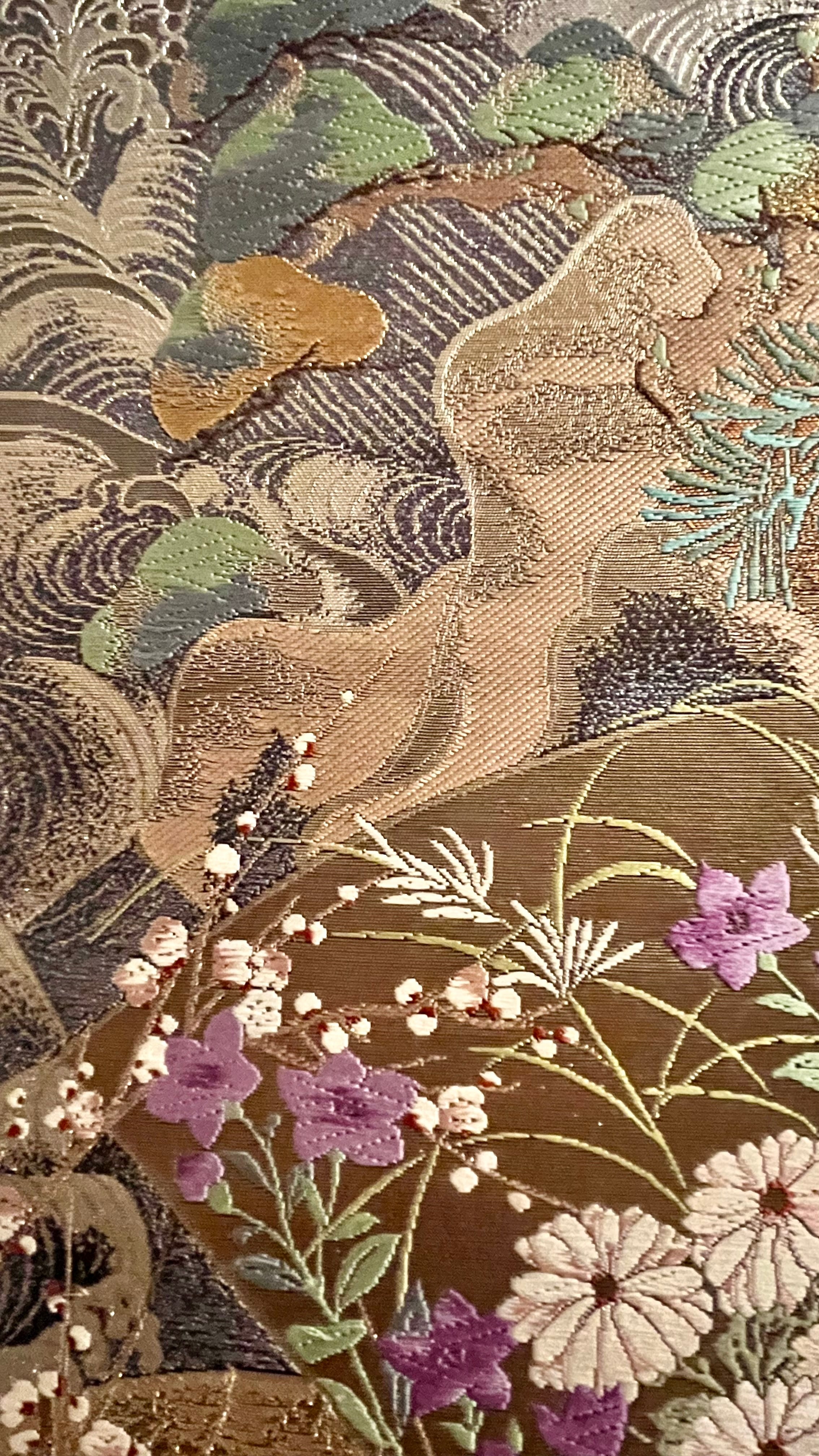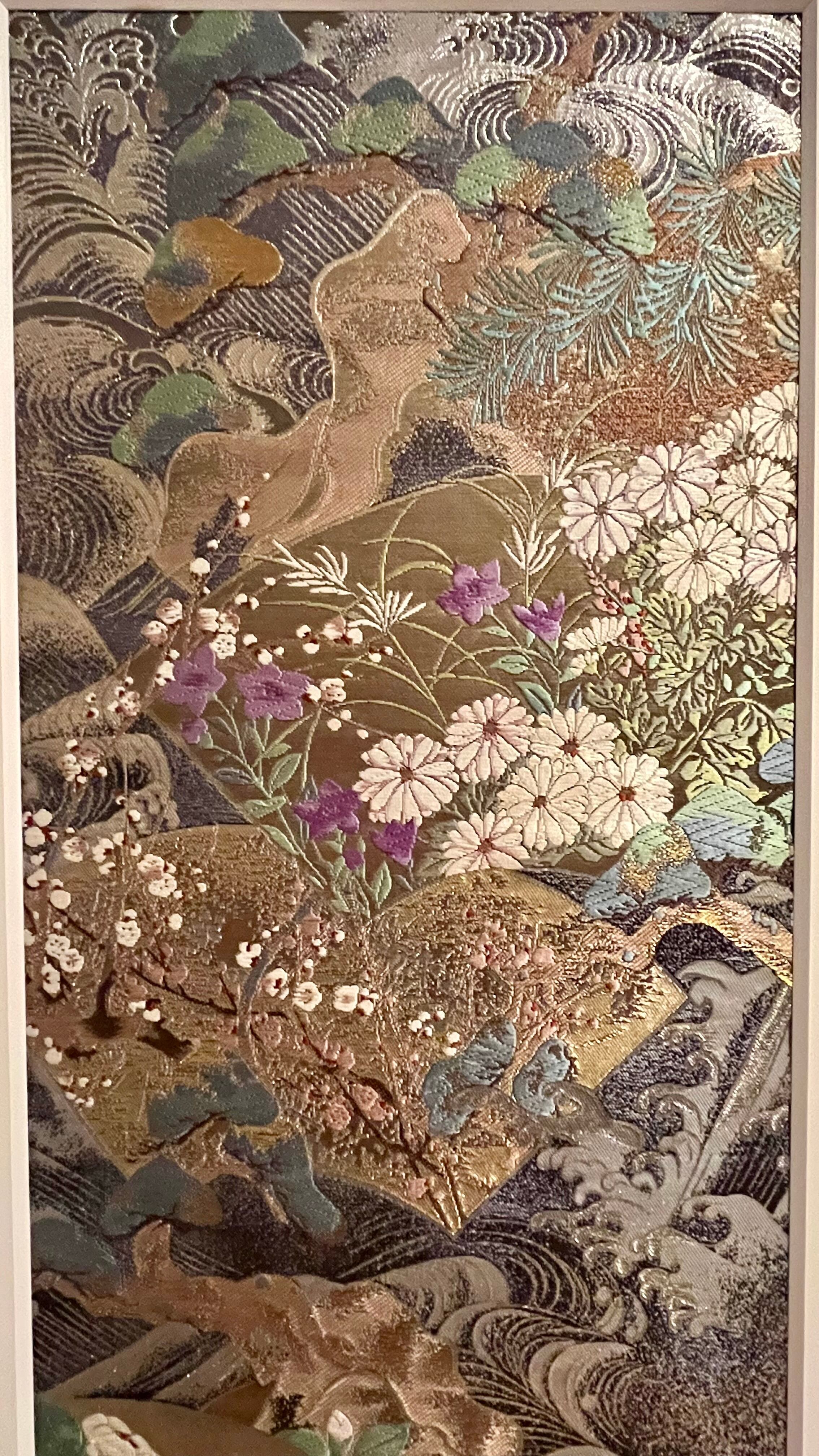










Shiki–Kinkei – 四季錦景
¥60,000 税込
SOLD OUT
1970〜80年代、京都・西陣で織られた唐織の袋帯を額装しました。
「唐織(からおり)」は、刺繍のように文様が立体的に浮かび上がる、最も華麗で高度な織技法のひとつ。かつては能装束や婚礼衣装に用いられた格式高い技で、現代では職人も限られています。
こちらの帯には、金糸がきらめく風景の中に、四季を彩る草花と自然のモチーフが織り込まれています。それぞれの文様には、長寿・再生・清らかさといった吉祥の願いが込められており、日本人の美意識と、自然との調和を大切にする心が映し出されています。
《文様の意味》
◆桔梗:誠実・永遠の愛
◆撫子:優美・日本女性の美徳
◆椿:気品・誇り
◆梅:忍耐・希望・新しい始まり
◆松・山:長寿・生命力
◆流水:清らかさ・幸福の連続
静けさの中に華やぎを宿す、伝統工芸と自然の詩的な調和がお楽しみいただけます。
This piece features a Kara-ori obi, woven in Kyoto’s Nishijin district during the 1970s–1980s, carefully preserved and framed as a work of art.
Kara-ori is one of the most exquisite and technically refined weaving techniques in Japan, known for its richly raised patterns that resemble embroidery. Historically, it was reserved for Noh theater costumes and wedding garments—an art form of the highest rank, now carried on by only a handful of master artisans.
The obi is adorned with glistening gold threads that depict a landscape woven with flowers and natural motifs representing the four seasons. Each motif embodies auspicious wishes—longevity, renewal, and purity—and reflects the Japanese sense of beauty and a heartfelt respect for harmony with nature.
《Motif meanings》
◆Bellflower (Kikyo): Sincerity, eternal love
◆Fringed pink (Nadeshiko): Grace, feminine virtue
◆Camellia (Tsubaki): Elegance, dignity
◆Plum blossom (Ume): Resilience, hope, new beginnings
◆Pine & Mountains: Longevity, vitality
◆Flowing Water: Purity, enduring happiness
A poetic harmony of tradition and nature, this artwork offers quiet elegance with a radiant spirit.
-
レビュー
(2)
-
送料・配送方法について
-
お支払い方法について
¥60,000 税込
SOLD OUT



































